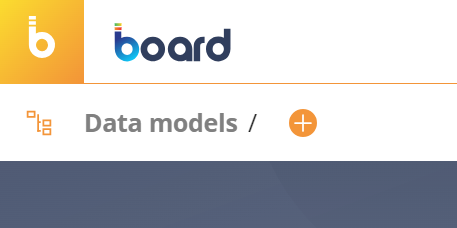Board’s Data Model technology is designed to ensure maximum efficiency in managing very large volumes of data and to provide top-level performance. The implementation of exclusive multidimensional management techniques completely avoids the database explosion problem typically associated with multidimensional databases (also referred to as M-OLAP).
Board’s Data Models are multidimensional and are therefore optimal for online analytical processing (OLAP). Conceptually, a multidimensional Data Model uses the idea of a data Cube where the Cube cells contain values and the dimensions represent the different possible perspectives on data. For example, a "sales" Cube, would contain sales values in its cells and could be viewed by various dimensions such as product (i.e. the sales figure per product), geography (i.e. sales figure by city or region), time, and so on.
Data such as turnover, assets and liabilities, expenses and revenues etc. are normalized and stored in multidimensional objects called Cubes that are structured by Entities (such as Month, Customer, and Product).
Entities can be linked through relationships to establish hierarchical structures (e.g. Customer → Country → State). Some Entities that we define as "Unbalanced" can accommodate indirect hierarchical structures. Users can read, write, and update Cubes regardless of their data sources.
Board supports write-back not only on its Cubes, but also directly on relational data sources, making it possible to effectively integrate performance management processes with enterprise applications.
Data Model makeup
A Board Data Model is made of:
Entities: these are information sets, generally text and codes. For example, an Entity could be defined for a list of Customers, or of Products, or of Cities. Entities (and hierarchies) are the Cube's dimensions.
Relationships: when two or more Entities have a many-to-one relation, then a Relationship (or hierarchy) can be defined. For example, the entities Customer, City, and State can be organized into the Relationship "Customer → City → State" since there is a many-to-one relationship existing between Customer and City and another between City and State.
Cubes: Cubes contain data (often numerical but not strictly) that can be analyzed and viewed by its various dimensions and hierarchy levels.
Entities, Relationships, and Cubes form the multidimensional Data model of the company or, more generally, the modeled system. We use the term "dimension" to refer to an independent Entity or to an entire Relationship, which can be used as an axis for a Cube. For example, the "Currency" Entity can be used as a dimension for Cubes such as "Orders value" and "Invoiced value". The three Entities Customer, City, and State are hierarchically related, and therefore form a unique dimension, referred to as the Customer dimension: the dimension is named after the base level Entity of the Relationship, the one that represents its most detailed level.
Data that Board connects to
Board provides the capability to connect, integrate, and federate data across:
Relational databases and Data Warehouse(s)
Enterprise applications (e.g. SAP ERP)
Multidimensional sources (including SAP BW)
Web Services via API calls
Excel, CSV, and TXT files
Cloud-based sources
Data is usually imported into Board via Data Readers. Data Readers also handle the mapping of data to Entities, Relationships, and Cubes. Imported data can be later manipulated using Data Model Procedures.
Board leverages the following list of data providers in order to import data from external sources:
Open Database Connectivity (ODBC) standard and OLE DB to connect with relational databases
CSV and TXT files
